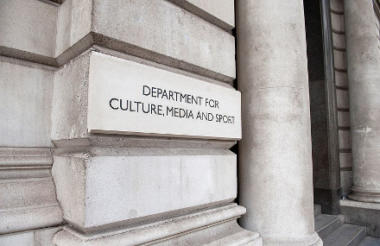Dormant assets aren't a windfall, they're a new funding stream, says David Ainsworth. We need to make sure we have a proper, long-term solution.
Last week the government announced it was distributing £330m from dormant bank and building society accounts to good causes. As ever, this was presented as unalloyed good news, but actually it threw up a number of issues.
Essentially it highlights that there is a potentially enormous pool of cash just waiting to go to good causes – of the order of magnitude of another Big Lottery Fund – and while that some of it is currently being dribbled out in bits, there’s no long-term strategy. Mismanagement of existing funds means there’s not as much cash as there could be, and much of the money is just sitting there, waiting to be given away.
And probably most crucially, the discussions so far have focused mostly on the money which has already accrued. But this is probably less than the money which will accrue over the next decade, which is what we really need to debate.
It suggests that we really need a good solution that works permanently. There is a lot to play for here for the charity sector.
Where is all this money coming from?
This is going to take a bit of unpacking, so bear with me here.
The cash we saw last week was first unlocked by Labour, with the Dormant Bank and Building Society Accounts Act 2008.
The act said that cash from an account that had been dormant for more than 15 years should go first into a Reclaim Fund, in case it did still belong to someone, and then, if no one wanted it, on to good causes. The act specified three good causes – social investment, youth inclusion, and access to finance.
The original estimate suggested that dormant accounts would yield £500m. Under the Barnett Formula, £400m of which would be spent in England and the rest in other nations. By the time the Reclaim Fund started to receive cash, there was a coalition government under David Cameron. He committed what he thought would be the whole of England’s money to Big Society Capital, which had just been established as a wholesaler to grow the social investment market.
But it turns out the government’s original estimate was low. In five or six years of operation, more than £1bn has already flowed into the Reclaim Fund from dormant accounts. Only a single-digit percentage of this has been returned to the original owners, and it seems unlikely that this will change much as time goes by.
After the most recent funding tranche, Big Society Capital has now received all the cash it was promised. It may get more, but no one seems terrifically keen. BSC’s mission requires it to protect the capital they were endowed with, and it seems to have plenty for what it needs to do.
The government is now having to find other places to put this money. This most recent tranche committed £90m to youth and £55m to financial inclusion – the other priorities mandated by Labour in the 2008 act. By the time that money is spent, in four years, government will have the same problem again, because cash continues to pour in at around £130m a year. So far the amount is growing, not diminishing, each year.
As of March last year there was £569m in the Reclaim Fund, of which £230m remains unallocated. By the time the current commitment is spent, there might be £800m or so.
Nobody seems to have quite expected this, but perhaps we should have. Simply, each year, more bank accounts fall dormant. Doing a very-much-back-of-the-envelope calculation, the Reclaim Fund is likely to continue to grow by anything from £50m to £100m a year, in real terms, after all reclaims, in perpetuity.
That’s just the tip of the iceberg
The money in dormant accounts is comparatively small beer. A recent report estimates that much more currently lies in other dormant financial assets – things like insurance policies, pensions and stocks and shares.
The commonly quited figure is £2bn, but this is still on the low side. The report is deliberately conservative, and it wouldn't be awfully surprising if the actual figure turned out to be £3bn or £4bn.
But of course, as with bank accounts, more assets will also fall dormant every year, so there will also be a flow of hundreds of millions more over the next decade. If dormant assets behave like dormant bank accounts (and I don't know if they will) then new assets falling dormant could yield around £200m to £300m a year.
We could turn it into even more money
I’m guessing all of the dormant resources collected will flow into the Reclaim Fund. Then there’s a real issue of what happens next. At the moment, once cash is passed to the fund it just sits there, earning no return, waiting for a reclaim which almost never comes. It seems likely that the fund will hold anything it receives for three years.
With this in mind, there’s no practical reason why the resources of the Reclaim Fund couldn’t be invested cautiously and prudently back into the stock market, or at least the bond market, and build more capital.
The stock market returns 7 per cent a year, after fees but before inflation, give or take. A current account returns basically nothing. If money is currently being held for an average of three years, that means that sensible investment could add a fifth or a quarter to the total amount which could be distributed.
This may require some fairly serious rejigging of how the fund is established, but we’ll need legislation to manage dormant assets anyway. It could be practical to amend the Reclaim Fund governing principles at the same time.
What should we do with all this cash?
There’s obviously a huge margin for error in my figures, but we’re talking real money. We’re talking one of the biggest funders in the UK, probably behind only Wellcome, the Lottery and the Arts Council.
It’s obvious that with a resource this significant, we can’t have DCMS allocating funds in dribs and drabs, every two or three years, according to the whims of the government of the day. We need a structured, long-term plan.
At the moment, dormant assets are in pre-consultation and dormant accounts are being distributed as the mood takes DCMS.
It’s worrying that it’s taken almost a year since the launch of the dormant assets report just to launch a consultation, but not wholly surprising. Dormant assets are much more complicated than dormant accounts. They don’t have fixed values, they don’t all have the same definition of dormancy, and recompense for reclaimed assets is nothing like as clear cut. So the government has to establish how to handle that, as well as how the cash is given away. It will also probably need new primary legislation.
When we come to spend it, we musn't treat this as a one-time opportunity, as we did before. The dormant accounts have taught us that money will keep coming, and so we have to future-proof any solution.
Clearly what we need is to avoid focusing on a single issue, because what seems vital now - like homelessness, for example - could easily not be a priority down the line. And we want to avoid a single method of financing, like social investment. Ideally you'd expect this money to go out mainly in grants, but why tie your hands?
You'd want the money available country-wide, and ideally you'd want to do it through an existing funder who can scale up, not a new institution, because reinventing the wheel is costly and uncertain. You'd want scrutiny, transparency and accountability, because this is public money and needs to be spent well. And ideally, it would still offer government some ability to maintain a little control, because otherwise, DCMS won't go for it.
And you'd need to make sure the money could continue to be spent effectively over long periods of time. It's poor funding practice to shove a couple of hundred million at a single issue, over three years, and then cut it off. There's a rush to get the cash out of the door. A lot of people have to be recruited to distribute and use the money, and then sacked afterwards. And the problem just comes back once the money's gone.
There is already a fairly broad consensus in the sector that existing dormant assets money should go to community foundations as a permanent endowment. This is exactly the right kind of place for this money, because it broadly meets all the criteria above, and it will get cash to small and medium-sized charities which struggle for funds. We should aim to channel all future money there, as well, because community foundations will always be able to find somewhere useful to put this money, depending on the current priorities.
The key is that this is not a windfall. This is not cash to be spent once. This is money for poserity, and we need to treat it that way.
Related articles












